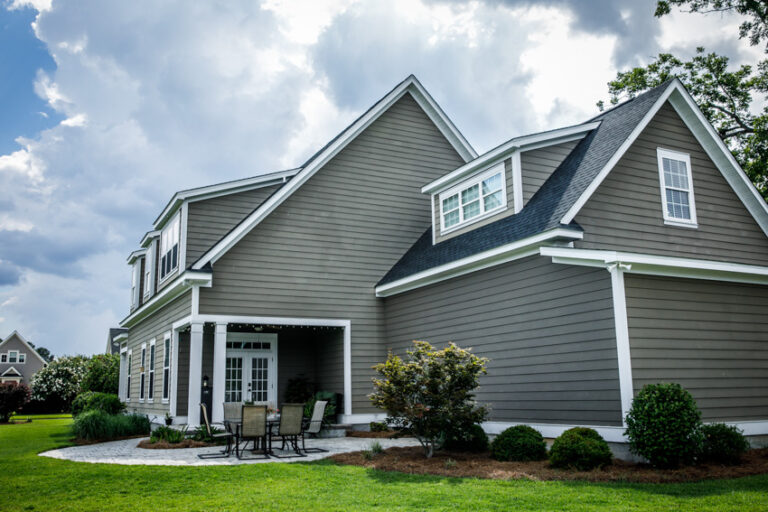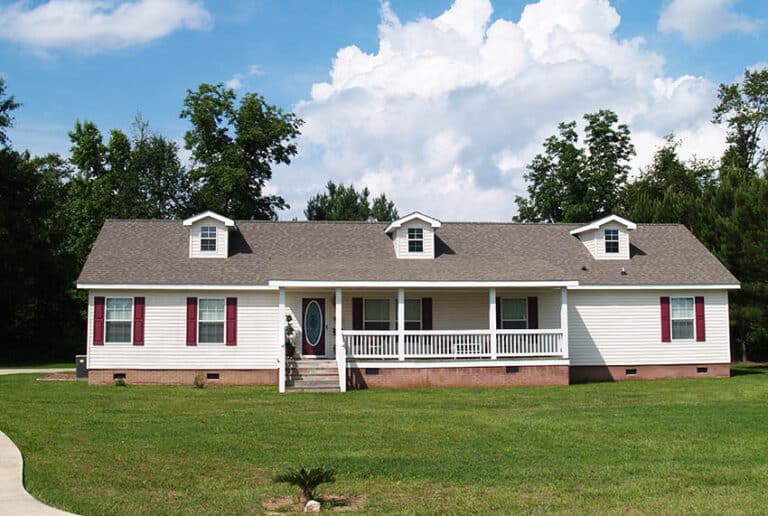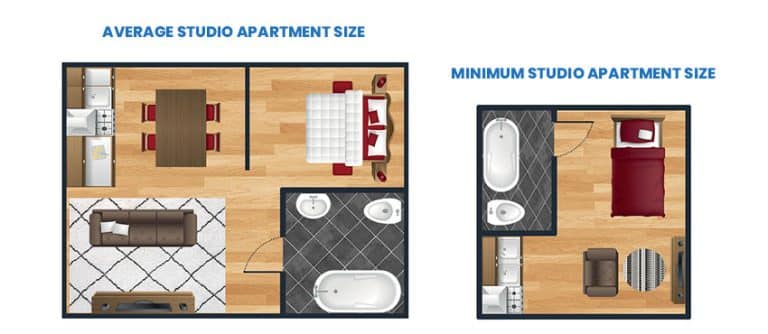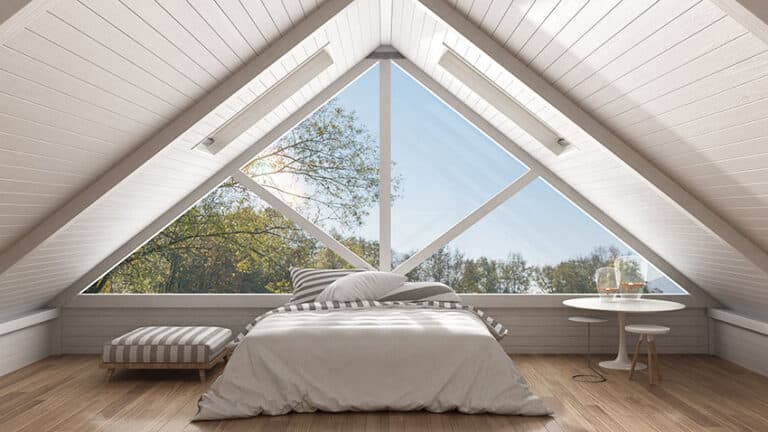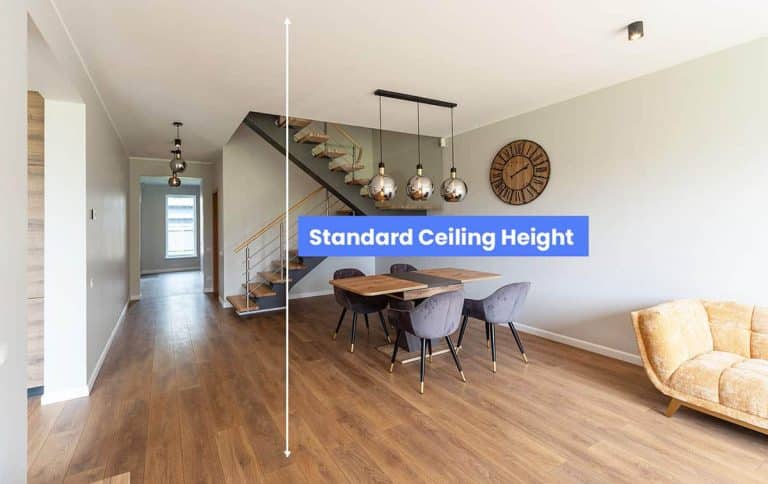What to Know Before Buying A Pole Barn House (Design Guide)
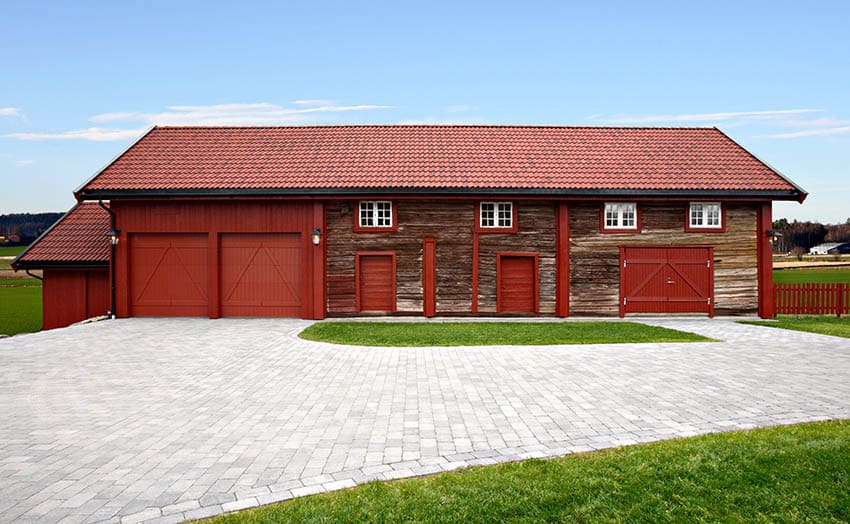
The most authentic and iconic of all, pole barn houses are known for affordability and sweeping historical characteristics. They have been a part of America’s lush landscape for centuries, but they seem to have disappeared due to the emergence of much fancier architectural home styles. With the re-recognition of pole barn houses in America and homeowners paying detailed attention to them, we see a sudden demand for these homes across the country.
Now that the barn houses are back in fashion, they have yet taken another toll with the introduction of comfort, warmth, and luxury in the home spaces. Deeply rooted in agriculture and farming, these homes are now redefining their personalities with an utterly modernist concept and an eye to detail.
Pole Barn House Designs
A pole barn house is a structure with a post-frame construction that uses poles driven or secured into the ground. Post-frame buildings use steel posts, solid wood posts, or laminated columns rather than the wood studs found in most homes. These poles are the primary means of support for the roof.
Post frame construction can use a variety of different types of foundations to adapt to different weather conditions. The way they are constructed with large supports allows for larger windows and provides more room for insulation making them more energy efficient.
Pole barns were a great solution for farmers who needed an affordable solution for storing farm equipment and supplies. Post frame homes can be built quicker and at less expense than traditional wood framed buildings.
Characteristics of Pole-Barn Homes
1. Distinct, Easy Recognizable Exteriors
2. Gabled Roofs
3. Massive Ceiling Heights
4. Gambrel Roofs
5. Extended Porches
6. Exterior Wall Framing
7. Wooden exposed beams
8. Stonework
9. Barn Style Windows and Doors
10. Lofts and Basements
11. Open Floor Plan Living
12. Exposed Supporting Beams
Pros and Cons of Pole-Barn Homes
Pros:
- Customizable designs and sizes to your specifications
- Can buy DIY modular home kits
- Lower cost to build
- Better energy efficiency (More space for insulation)
- Faster construction time
- Lower maintenance
Cons:
- Often, homes have no basement
- May not qualify for a mortgage on homes with no concrete foundation
- May have trouble appraising properly
- Local permitting may be an issue
Types of Pole Barn Style Houses
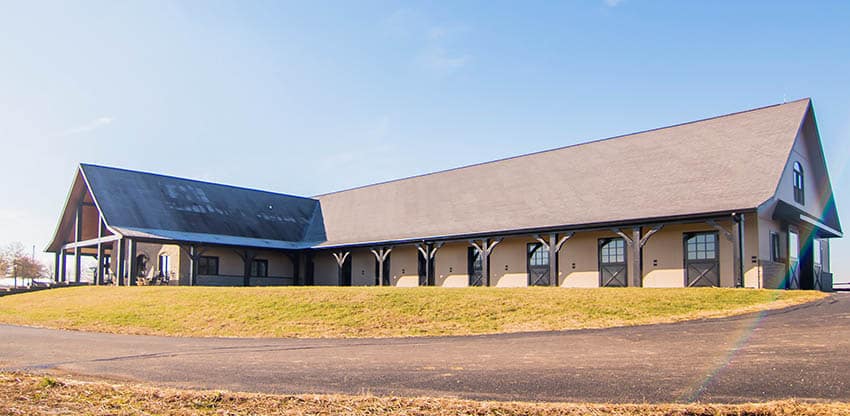
Pole barn houses enjoy numerous styles for their specific exteriors and interiors. However, the three most prominent styles are Rustic, Ranch, and Modern. The most industrial is the rustic pole barn House style, which features unfinished textures, rugged interior walls, and exposed metalwork.
Meanwhile, contrary to these are the Modern Barn houses, which characterize the much-updated existing features and further focus on wellness and clean, crisp lines. In the end, the most traditional of all is the ranch-style homes, which are still admired by homeowners and architects around the world. They feature plenty of living and private spaces with connected outdoor patios.
Pole-Barn House Kits
Pole barn kit prices range from $4,000 to $50,000, depending on the size, specifications, and quality. The house kit may rise to $100,000 for residential purposes, considering the wall openings, insulation, roofing, moldings, downspouts, and gutters.
The kits could be further customized depending on the colors of the exteriors, the outer and inner framing and overall sheeting.
Typically, a small-sized garage may cost around $2,400-$10,700, a mid-sized storage space could vary between $7,000-$21,000 and a large customizable workshop at around $14,400-$51,000.
Furthermore, an extra-large residential or commercial facility may typically vary between $49,000-$100,000. If you plan on buying one, note the 30-40-year warranty on the manufacturing, engineering drawings, certification, and anchor bolts.
Pole-Barn Plans
You can find many different pole barn house plans online, and you can select the design and square footage. The plans often come with layout renderings, home dimensions, elevations, and electrical and wall and roof details.
Once you have your plan in hand, you can contact a local builder who can help you construct your home on your property.
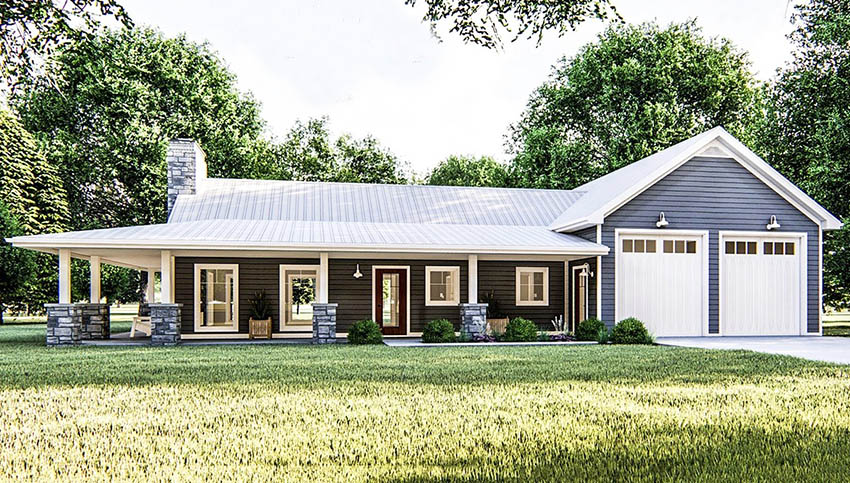
Post frame country style house with wraparound porch – see more details here.
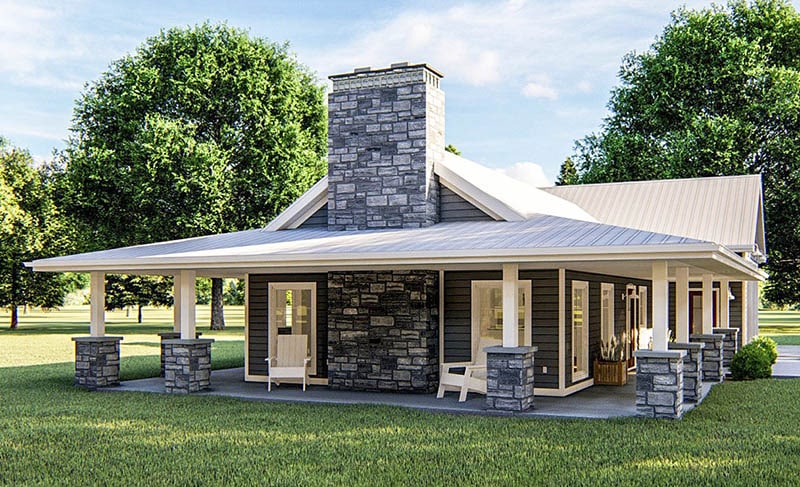
Image of home with wraparound porch, stone columns, and stone fireplace.
Pole-Barn Cost
Now that we know pole barns hold an upper hand on the overall affordability, they also are a great solution for easy construction and adaptability. Their reliance on vertical poles for stability overpowers the foundation, thus saving a huge amount on construction. These homes are famous for being used as storage blocks, garages, barns, and sheds. But if you want a quality barn-style home, we highly recommend that you think about spending more to get better finishes and materials.
House Price Per Square Foot
Building a pole barn house costs $35,000 to $70,000 or $15 to $30 per square foot. The larger and more customizable ones cost around $45 per square foot or $100,000 plus when fully finished.
Also, casting a concrete slab may cost around $6 per square foot to pour. In terms of an apartment or a loft, the cost should be around $25 per square foot. The total is often comparable to the price of a shipping container house.
Breakdown of Pole-Barn Cost
Several factors are directly linked to the overall costs and surcharges for building this style of house. To make it easier for you to understand, we will break down the additional costs into categories and subcategories.
56% of your budget is defined by Site Prep Work ($3,000), Concrete Foundation ($15,300), Major Systems ($35,000), and Interiors Finishes ($70,000).
Landscaping and leveling the Ground = $1,200 to $4,500
Hiring a Construction Manager = $3,000 to $41,000 (they usually take 15%-20% of the overall cost.
Siding Materials = $5,000 to $10,000 for wood and around $10,000 to $15,000 for aluminum.
Insulation may vary from around $800 to $2,000 depending on the functionality.
Installing Drywall costs around $1,200 to $2,500.
A metal roof (aluminum or steel), including the labor, may cost around $5,000 to $25,000.
Now, finishing your pole barn home with selective flooring, doors, windows, and paintings may depend on your subjective individual choices.
Pole-Barn Interiors
It is very typical for a pole barns to have large, open, and spacious high ceilings. Due to this tremendous vertical space, these homes always have the advantage of utilizing it as a mezzanine floor, introducing wooden rafters, or simply creating nooks to add that cozy feel to these homes. The color palette is subtle and neutral, with a vibrant breezy feel and abundant windows, doors, skylights, and light furniture.
One noteworthy feature that sets this style apart is the creative use of the second level of the home. Those are used as bedrooms with majestic dormer windows or simply a living area for the family to sit together and chat. To add efficiency, you could even add storage in these spaces.
Another way to add space to your pole barn house is the modification and addition of the basement – which, of course, doesn’t come with the kit – but it could be a modern addition to your home. Due to the increased indoor living space, they may be a better alternative to a tiny house design.
How Long Will a Pole-Barn Last?
A pole barn is considered a permanent structure that lasts about 15-20 years and requires comparatively moderate maintenance. In comparison, the metal building structure stays up a lot longer, including overall cost savings.
These pole barn homes have a charm that captures the eye from afar. Their timelessness and authenticity make them a great option in terms of investment and aesthetics. So, are you enthralled about choosing this home style as your next? In the comments below, let us know what you think about a pole barn house.
For another related design gallery, visit our geodesic dome house page.

